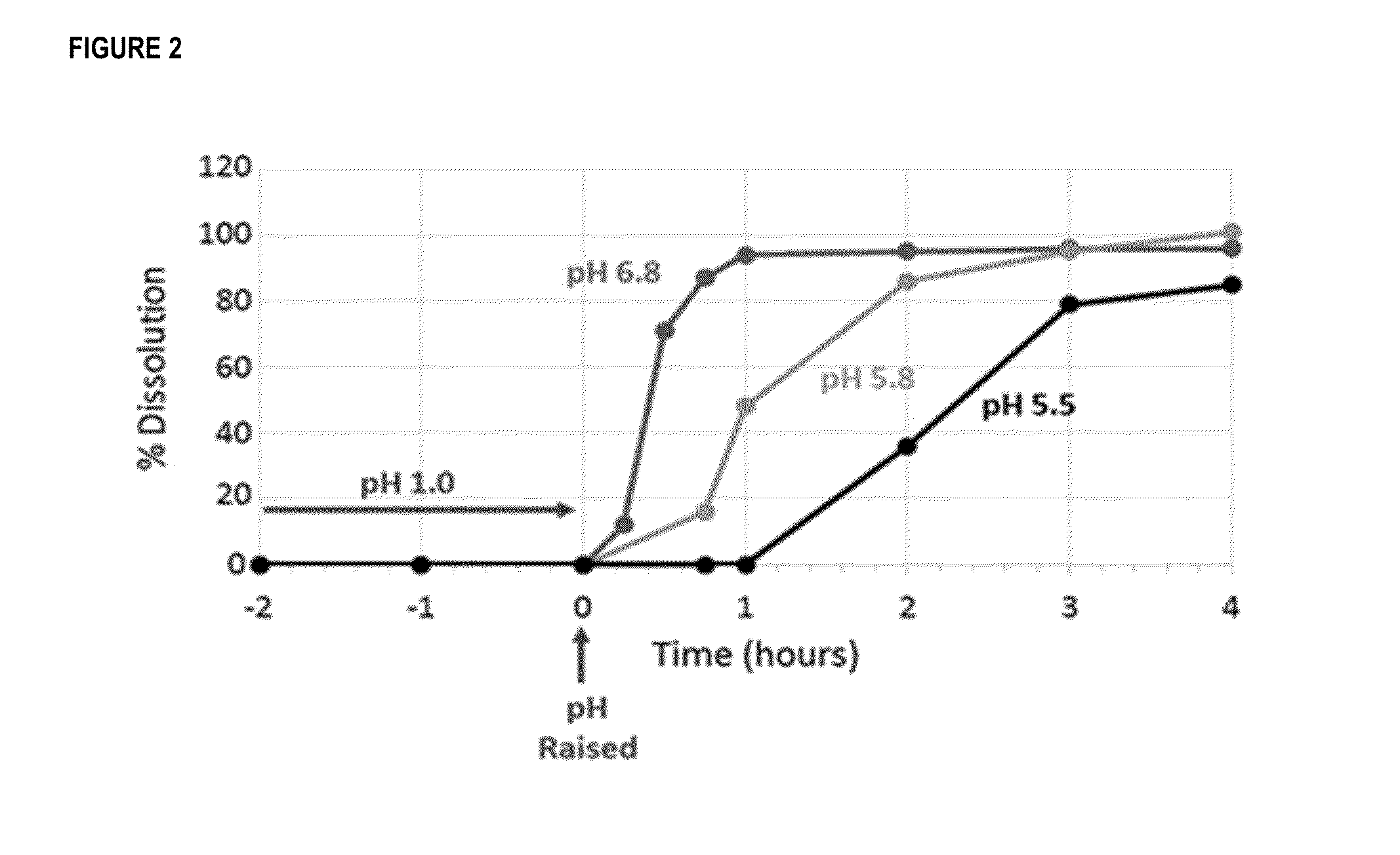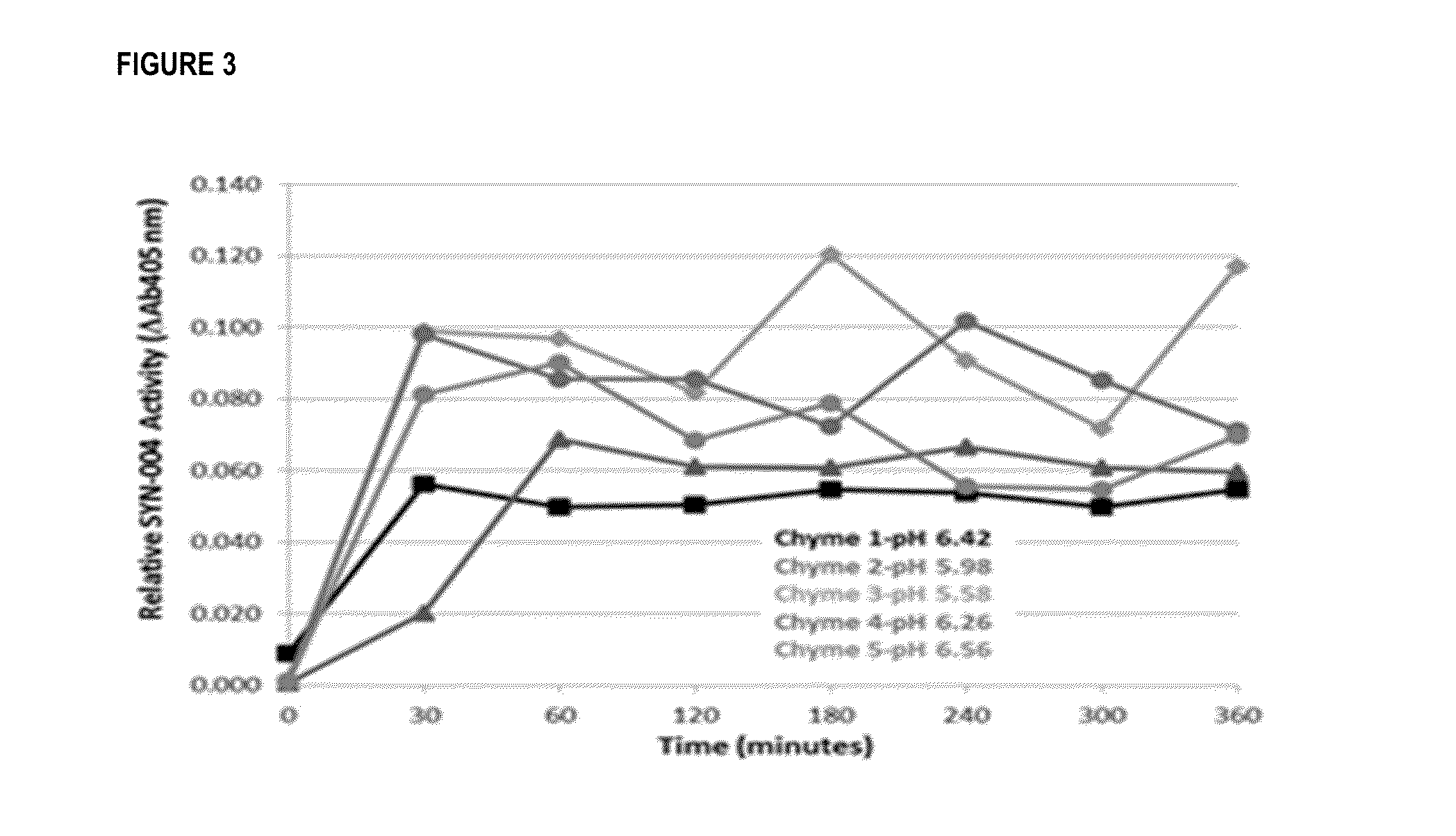Beta-lactamase formulations and uses thereof
- Summary
- Abstract
- Description
- Claims
- Application Information
AI Technical Summary
Benefits of technology
Problems solved by technology
Method used
Image
Examples
example 1
Manufacturing of P3A Delayed-Release Pellets and Capsules
[0171]A P3A formulation including P3A enteric-coated pellets was produced. To produce the pellets, P3A was spray-coated onto a sucrose core and spray-dried with an enteric layer, Eudragit L30 D-55, to protect the P3A active pharmaceutical ingredient from the acidic conditions of the stomach. The Eudragit L30 D55 polymer begins to depolymerize when the pH rises to 5.5 and above in the small intestine, thus releasing the active drug from the pellet.
[0172]Delayed-release capsules including the P3A enteric-coated pellets were manufactured in a GMP process as depicted in FIG. 1A. Specifically, the GMP manufacture of P3A Delayed-Release Capsule was a three stage sequential process including: 1) P3A drug layering onto sucrose core pellets by spray application, 2) enteric coating with EUDRAGIT® L 30 D-55 using spray application, and 3) encapsulation of pellets into hard gelatin capsules size 0.
[0173]P3A layered pellets were produced b...
example 2
Composition and Appearance of P3A Delayed-Release Pellets and Capsules
[0183]The P3A dosage form is a hard gelatin capsule or a hydroxypropyl methylcellulose (HPMC) capsule filled with delayed-release pellets. The capsule is opaque white or white and is size 0. The delayed-release capsule contains pellets composed of sucrose spheres coated with an inner layer of P3A drug substance in excipients and a pH sensitive enteric outer coat in excipients. The pellets are designed to begin dissolving in the upper small intestine as the pH rises above 5.5, releasing the drug substance.
[0184]The list of components and the amounts in P3A delayed-release capsules (75 mg and 25 mg strength) and placebo capsules are provided in Table 3. For the 75 mg and 25 mg strength P3A delayed-release capsules, pellets from the same manufacture batch were encapsulated to the desired capsule strength, so the percent of each component is identical. For the placebo capsules, the placebo pellets were encapsulated to...
example 3
pH Dissolution Profile of P3A Delayed-Release Pellets and Stability of P3A Delayed-Release Pellets in Human Chyme
[0186]Enteric-coated P3A pellets (as formulated in Examples 1 and 2) were held in 0.1M HCL solution for 2 hours followed by incubation in buffers having a pH of 5.5, 5.8, or 6.8. from 15 to 240 minutes. Aliquots were taken at 15, 30, and 45 minutes, and at 45 minutes, 1, 2, 3, and 4 hours for the pH 5.5 and 5.8 samples, and at 1, 2, 3, and 4 hours for the pH 6.8 samples. All sample aliquots were assayed for beta-lactamase activity using the CENTA chromatogenic assay.
[0187]As shown in FIG. 2, the P3A enteric-coated pellets were protected at low pH while dissolution occurred at pH of greater than 5.5, with pH 5.8 and 6.8 showing more rapid dissolution than pH 5.5.
PUM
| Property | Measurement | Unit |
|---|---|---|
| Fraction | aaaaa | aaaaa |
| Fraction | aaaaa | aaaaa |
| Percent by mass | aaaaa | aaaaa |
Abstract
Description
Claims
Application Information
 Login to View More
Login to View More - R&D
- Intellectual Property
- Life Sciences
- Materials
- Tech Scout
- Unparalleled Data Quality
- Higher Quality Content
- 60% Fewer Hallucinations
Browse by: Latest US Patents, China's latest patents, Technical Efficacy Thesaurus, Application Domain, Technology Topic, Popular Technical Reports.
© 2025 PatSnap. All rights reserved.Legal|Privacy policy|Modern Slavery Act Transparency Statement|Sitemap|About US| Contact US: help@patsnap.com



